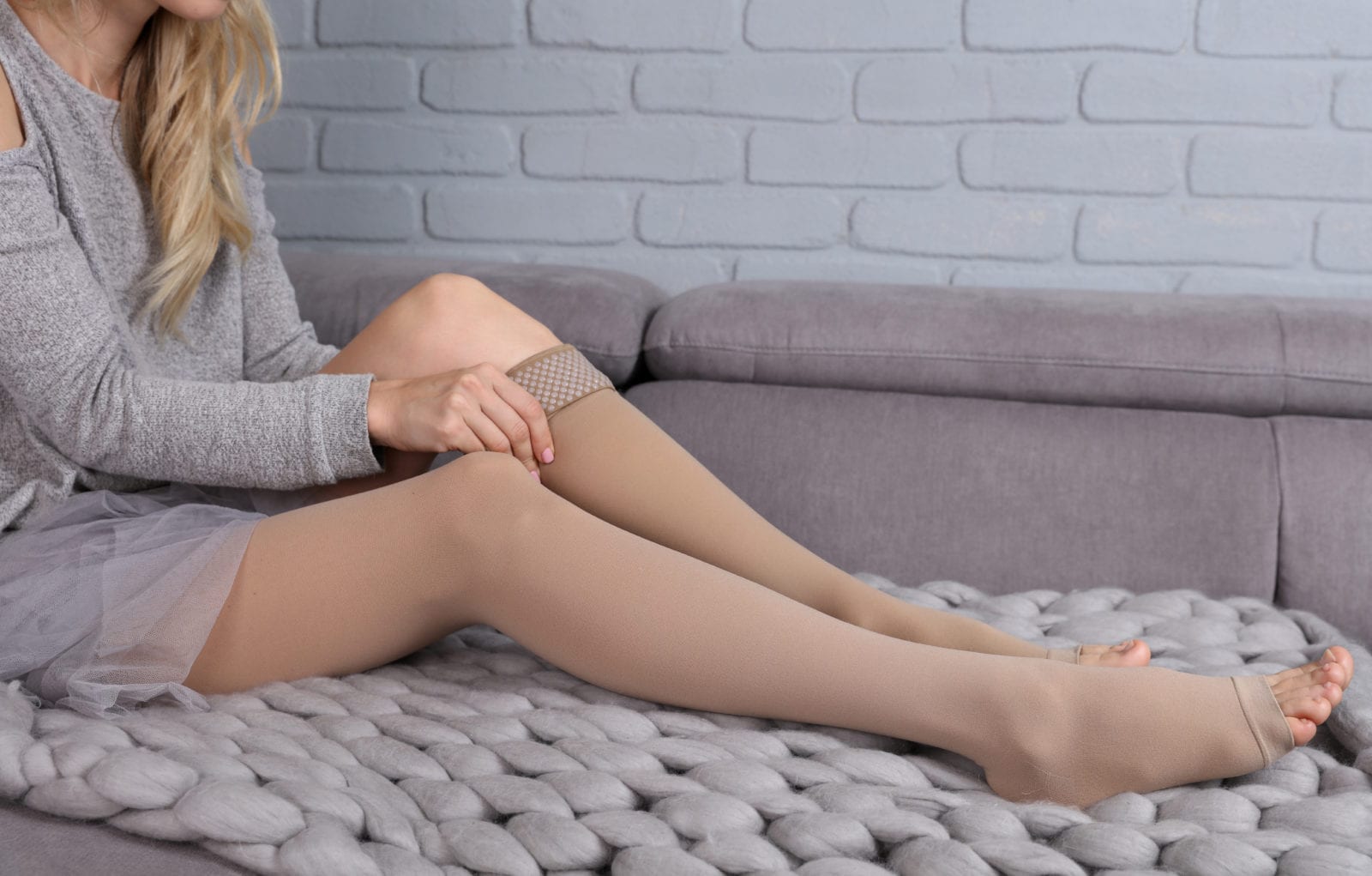Call to speak to a Licensed Insurance Agent
Mon - Fri 8am – 8pm EST; Sat - Sun 10am - 6pm EST

Compression stockings have become a popular way to reduce pain and swelling the ankles and legs. One common question about them is “does Medicare cover compression stockings?”
We answer that question below in a clear, straightforward way. And we also take a look at what compression stockings cost and some other helpful background info about them.
The short answer here is usually not. However, there may be a few situations where Medicare will cover at least part of the cost of compression stockings. Let’s dig in a little deeper.
Medicare does not usually cover medical compression stockings because they are not considered medically necessary supplies. They also are not considered Durable Medical Equipment (DME) which Medicare Part B covers.
However, Medicare could cover the cost of a specific kind of compression stocking if you have a specific condition or disease. One of these is if you have an open venous stasis ulcer in your leg.
If you suffer from a stasis ulcer there are still some hoops you have to jump through to get Medicare to cover compression stockings. The main one is you’ll need a doctor’s prescription. The prescription needs to be for a compression range between 30 mm Hg and 50 mm Hg.
In this case the compression stocking is considered wound care and could be covered.
Another way for Medicare to cover compression stockings is by enrolling in Medicare Advantage plan (Medicare Part C). Some plans from the insurance may cover compression stockings.
The prices of a medical compression stocking are different depending on the type and fitting of the stocking.
Standard fit knee-high stockings typically cost around $65. The thigh-high variants usually cost closer to $90.
Custom stockings are much more expensive than traditional counterparts. Custom-fitted knee-high stockings can cost around $225 and the thigh-high stockings can cost as high as $350.
Unlike regular stockings, compression stockings are used for medical and preventive purposes. These kinds of stockings are used to help reduce swelling and blood pooling in our legs.
Most medical compression stockings are tight around your ankle but loosen up as they get to your knee/thigh. Usually, compression stockings are only knee-high, but you can also find some which are thigh length.
Wearing compression stockings elevates the blood flow in your leg veins. For that to happen, the stockings compress the veins in your legs. And because your leg veins are compressed, your legs’ blood flows up toward your heart much easier.
Some benefits of medical compression stockings are the following:
There are several types of compression stockings, and each has its different purpose and function. Here are the types of compression stockings:
Anti-embolism stockings are useful for people who cannot move around because they underwent surgery are in recovery. These types of stockings prevent blood clots. The level of compression will differ depending on your doctor’s recommendation.
Graduated, or gradient, compression stockings apply intense pressure at your ankles, and the pressure decreases as they go up in your leg. These stockings are more functional if they are custom-fit to your legs because there is more pressure exerted. You can find compression stockings at a medical supply store.
The level of pressure of Support stockings/hosiery remains the same throughout the compression stockings. They are useful for providing extra comfort, especially when your legs are aching. You can buy them online and at drugstores.
Note: Medicare coverage changes all the time. And your specific coverage may impact what gets covered and what doesn’t. Always be sure to double check with your health care provider and/or Medicare insurance provider about what is and isn’t covered by your plan.
This article is part of our series on “What does Medicare cover?”
Also, you can check out other articles in this series including: Does Medicare cover shower chairs?